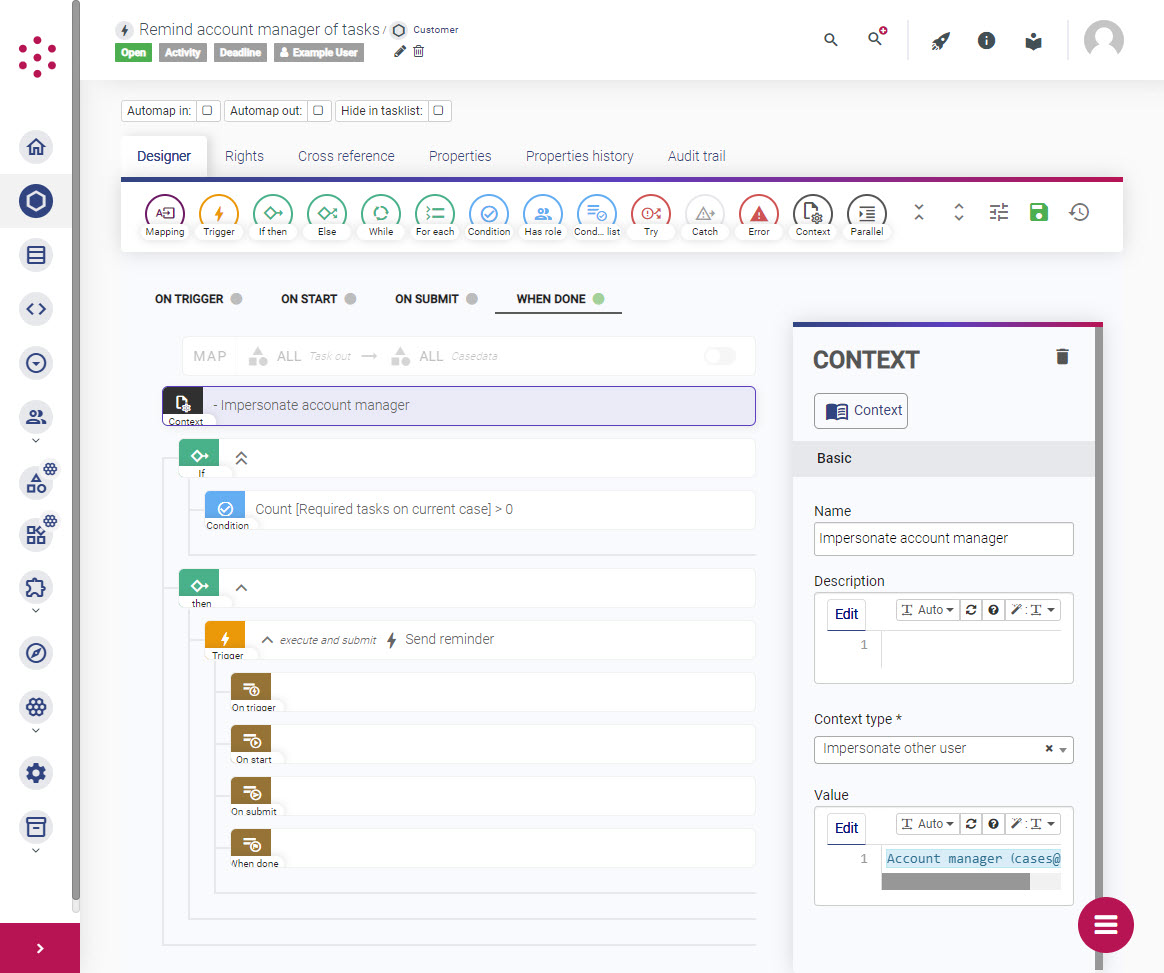Impersonate users during an event activity
To view data and perform activities in your application from the perspective of another user for debugging purposes, use Developer Tools.
When you add mappings and/or conditions to an activity, you can usually reference attributes or metadata from the User case of the user performing the activity. For example, if you want to provide an option for the current user to send an email to a customer, you might want to include the current user's name and contact details in the email body text. By using the user.Current user template function, you can populate the email body template with the details of the user performing the activity.
However, when performing an event activity, you cannot refer to the current user in a mapping or condition. This is because events (i.e. deadline, timed, and queued task activities) are always performed by Grexx Platform rather than by a user. As a result:
- Using the
user.Current useroruser.Has roletemplate functions in a mapping or condition will not return a value. - You cannot retrieve data from or evaluate conditions on the
Optional tasks on current caseandRequired tasks on current casedatasets (as these datasets only display tasks for which the current user hasRequestorExecuterights).
If you want to use these template functions or reference values from these datasets in an event activity, you need to use the activity context to impersonate the relevant user. Any conditions or mappings that reference the current user are then performed in the context of the impersonated user.
For example, you might want to send a weekly email to each user in the system with a list of their outstanding tasks on a particular case (such as a Claim, Product, Customer, or User case). To achieve this, you can trigger a timed or deadline activity on each case in a dataset.
In order to check whether a user has any outstanding tasks on a particular case, you need to add a condition using the Required tasks on current case dataset. However, the dataset will only return the mandatory tasks on the current case (the Claim, Product, Customer, or User case in question) on which the current user has Execute rights. As event activities are always performed by Grexx Platform (which does not have rights on tasks), the condition will never return any tasks. To perform the rights check as intended, you need to impersonate a user before evaluating the condition.
To use impersonation in an event activity:
- From the activity designer, select the appropriate activity stage and add a trigger.
- Select the relevant stage of the triggered activity and add a
Contextblock. - Set the Context type to Impersonate other user.
- In the Value field, use an inline template to identify the relevant
Usercase. For example, if you are performing the activity onCustomercases and you want to impersonate the account manager for each customer, use thecase.template function to select theAccount managerattribute that contains aUsercase ID. - Add mappings or conditions to the activity stage as required. For example, to check whether the user has outstanding tasks on the current
Customercase, use anIf thenrule and add a condition that checks whether the count of items in theRequired tasks on current casedataset is greater than zero.

When the event activity is performed, the condition checks whether the impersonated user has Execute rights on any tasks on the current Customer case.
To add further logic to the activity without impersonation, add another Context block and set the Context type to Reset impersonation.
Impersonating a user creates an empty user session. Step-up is not available for impersonated users.